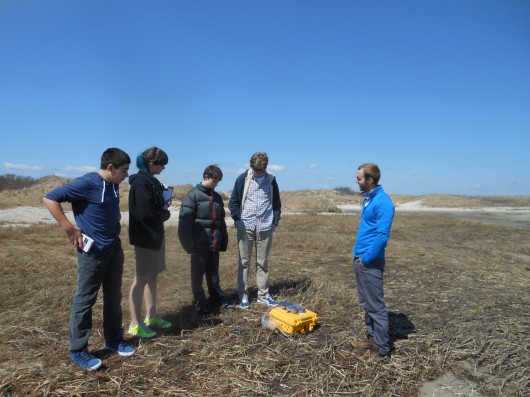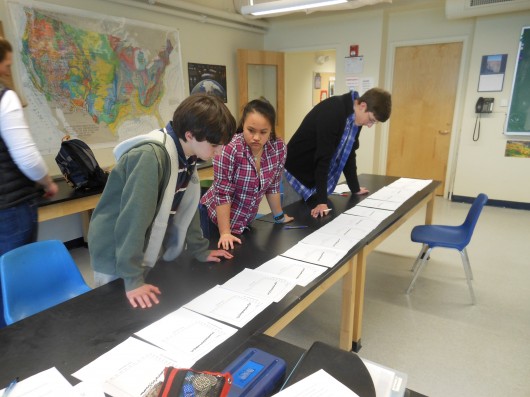Hi all,
Going back to an earlier blog post, last week I had the chance to visit the 9th grade environmental studies classes at Falmouth Academy to co-teach a lesson and give a presentation about my experiences with the Polaris Project. One of my goals while continuing to work with the Polaris Project at the Woods Hole Research Center has been to expand my outreach with Falmouth and Woods Hole teachers and students, and build relationships with our local schools. I find it very rewarding to share my enthusiasm for environmental science with students, as people have done for me during my education.
During the fall, I reached out to Falmouth Academy environmental studies teacher, Ms. Katie Curtis, about an opportunity to visit her class. Following a long correspondence of emails and meetings, we formulated a game-plan to co-teach a week long lesson about carbon cycling in the Arctic and in ecosystems around Falmouth. I first gave a presentation about the causes of carbon “sources” and “sinks” on Earth, and the impacts of permafrost degradation in the Arctic on our global carbon cycle. I shared with the students pictures and stories about my experiences with the Polaris Project and answered questions about day-to-day life in Siberia, especially as it pertains to dealing with hundreds of mosquitoes during field work. The following day, Katie and I gave her classes an opportunity to apply what they learned to real data of ground respiration and photosynthesis from Alaska, and introduced them to the outdoor lab activity using a portable LiCor CO2 gas analyzer. For the lab activity, Katie and I took her environmental studies classes outside to measure ground respiration of CO2 and photosynthetic activity at different ecosystem types around Falmouth. We trekked across grassy sport fields, nearby forests, and a coastal marsh, all the while allowing the students the opportunity to use the CO2 analyzer and discover which ecosystem types emit CO2 through ground respiration (as a source) or take in CO2 (as a sink) through photosynthesis of plants. With real data from their outdoor adventure, Katie’s students will be able to analyze the CO2 patterns and tie together everything they have learned over the course of the week. Overall, the lesson and outdoor lab activity made for a great way to connect important topics of carbon cycle in the Arctic with hands-on experience in ecosystems around Falmouth. It was also great to spend time outdoors in some nice sunny spring weather!
Cheers,
Craig

Using the LiCor CO2 analyzer at a nearby coastal marsh

The 9th grade environmental studies class interpreting real data from Alaska



